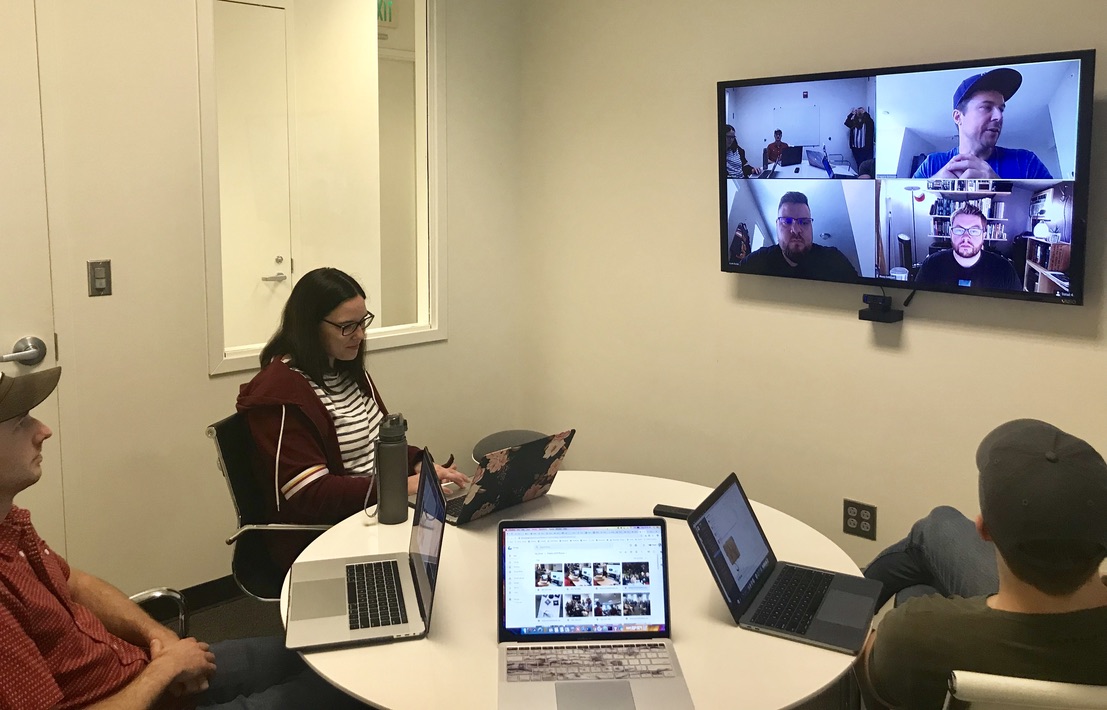Living in a southeastern city without a well-developed mass transit option, I bear witness to increasing commute times and the pressure they exert on employee and employer alike. In fact, I recently spoke to a law firm principal frustrated by the dilemma of how to reduce the time her employees spend in the car without compromising culture, mentoring and teamwork. She asked me what other employers are doing to solve the commute problem, so I asked them.
It turns out there is a lot of information out there about who is allowing “limited” telecommuting – i.e. two days per month — and very little information about how to make it work. So, I dug a little deeper and reached out to some veterans of the tech industry who have implemented “distributed workforce” models. In these models, employees are geographically spread across the country (or even globe) and almost exclusively telecommute.
I also read the book “Remote: Office Not Required” by the founders of Basecamp, a project management and communication software often used by these companies.
Finally, I reflected on my first hand experience: I telecommuted across many states for six years of my career.
Here’s what I learned.
Why adopt the remote or “distributed workforce” model?
- Access to talent. When employers can hire employees anywhere in the world, the labor market increases exponentially. A specialization that seems difficult to find in a small market is more readily found when proximity is removed from the equation.
- Flexible schedules and reduced commute times. If an employer can allow their employees to work flexible hours and eliminate commute time, it becomes a more attractive employer and may reduce the likelihood of employee turnover.
- Reduced overhead resulting from elimination of office space overhead. Less office space equals significant savings to the employer – even after subtracting the costs of equipping remote employees — especially if the employer is headquartered in a high rent office market.
- Employees save money too. Per flexjobs.com, the average person can save at least $4,000 per year by working remotely. Most of this savings comes from gas, car maintenance, dry cleaning and wardrobe costs.
Who gets to work remotely?
Determining who can and should work remotely depends significantly on whether you are starting a new business where any and all employees might be remote, or trying to convert some positions in an existing business to a remote model.
In my case, I was marrying someone in the military and the US Air Force was going to determine where I lived. I had been at JLL for three years and my open-minded boss, Frank Mann, agreed to let me try working remotely and see what happened.
Shegun Otulana, on the other hand, started his company, Theranest, with a remote model. Theranest provides practice management software for the mental health industry, and per Otulana, “We needed to scale company size without raising a lot of money… I am a developer so I felt I could do the work and successfully manage anyone doing it. It naturally extended to non-programming roles as well and worked out great for us.”
In other instances — law firms for example – there is a long tradition of in-office work. Culture must shift to introduce a remote option. As you can imagine, shifting the culture of a historically very traditional occupation is a challenge, but it’s possible. One law firm introduced the remote working option by allowing associates who had finished their second year to work remotely. Presumably the firm believes that third years were sufficiently trained and ready to be more independent. Likely they had also proven their work ethic.
Other firms have introduced remote work on a limited basis, for instance, allowing employees to work remotely one day per week.
If you are hiring someone straight into a remote position, how do you on-board them effectively?
Most of the sources I consulted with agree that ideally, on-boarding should be done in person. When Otulana founded Theranest, however, on-boarding was done remotely. While this helped manage costs, Theranest shifted its approach. They now bring all new hires to Birmingham for the first several days of employment. “They get to meet people in person and get immersed all day for a couple days.” Why? Employees need to know not just who they are working for, but who they are working with. They need to be able to put a face with a name.
Fleetio, a fleet management software company, also brings remote employees to its Birmingham headquarters for their first week. After that, they have a very structured on-boarding process they go through via Asana.
How do you set up a remote employee?
In order to succeed remotely, employees need to have the tools to communicate with their teams, the hardware on which to work, and appropriate connectivity.
Otulana says his company uses web phones and provides all employees with computers. Theranest used to reimburse for co-working space but now opt instead to give an allowance to setup a home office. Similarly, Tony Summerville, founder of Fleetio, says his company sends a laptop, monitor, an other hardware to each new employee’s home. On their one year anniversary, Fleetio gives employees a budget to buy more home office furniture like a desk and a nice chair.
When I went to remote working, it was during the age of dial-up connectivity. JLL set me up with a separate phone line (so old school) and computer and I was ready to work.
How do you ensure effective and consistent communication with and between remote employees?
Most tech companies rely heavily on project management and communications software like Slack and Zoom. But it’s not as simple as just selecting a software tool; you have to effectively use the tool.

Theranest’s phone pods
Theranest established a culture early on where everyone uses Zoom from their desks — even when some meeting attendees are in the office together and others are remote. This ensures that remote and in-office employees are on equal footing. Per Otulana, “this way, the remote people don’t get the ‘us’ and ‘them’ feeling. Everyone is connecting and communicating individually through Zoom. [And] When needed, we bring people down [to Birmingham] to communicate face-to-face.”

Just a typical Fleetio collaboration session.
Cadence Bank SVP and Director of Facilities, Jennifer Bratton, manages a team scattered across the bank’s southeastern footprint. She uses to Zoom to have face-to-face meetings with her team any time and finds it makes managing a distributed team feasible. Also Bratton believes the eye contact enabled by Zoom also encourages employees to be better engaged than while on audio-only conference calls.
In my experience, neither my clients nor my co-workers seemed to care that I wasn’t in the home office so long as I answered my emails or returned phone calls promptly.
How do you indoctrinate new hires into your company culture?
The authors of Remote state “You certainly don’t need everyone physically together to create a strong culture. The best cultures derive from actions people actually take, not the ones they write about in a mission statement. [Newcomers] see how decisions are made, the care that’s taken, the way problems are fixed and so forth.”
Summerville gives new employees a company overview during their first week in Birmingham, focusing more on Fleetio’s history, beliefs, values and other cultural elements. Theranest works similarly, however, Otulana states “culture is what we reward so it happens over time.”
Does remote working reduce or increase employee turnover?
In many companies, especially those that allow in-person employees to transition to remote workers, the model reduces turnover. In part, this is because employees that would otherwise have to leave a company due to a family move are able to continue working from another location (my situation). Similarly, eliminating commutes and giving employees back that time creates happier employees who are more likely to remain with the company.
When remote employees are treated like second class citizens and not included in meetings, et cetera, turnover can be higher. Many remote employers combat this by creating virtual water coolers. This is often done via a permanent chat room “where everyone hangs out all day to shoot the breeze, post funny pictures, and generally goof around.”[i] Github created a forum called #toasts where employees can post major accomplishments and colleagues from around the world post selfies toasting them.
There is virtually no difference in turnover rates between in-office and remote employees at Theranest. Similarly, Fleetio notices only a slightly higher turnover in remote employees, and their overall retention rate is great.
Beyond cost reduction, can remote workers contribute to greater productivity?
Absolutely. When properly set up, remote workers are better able to focus and less distracted by workplace hubbub- unless they choose to be. And for the billable hour professions like law, just think how many more hours your billers can bill when they aren’t stuck in cars, parking decks and elevators!
What do you think? Have you worked remotely? Would you allow your employees to do so? I would love to hear your thoughts!
[i] Remote. p. 100

